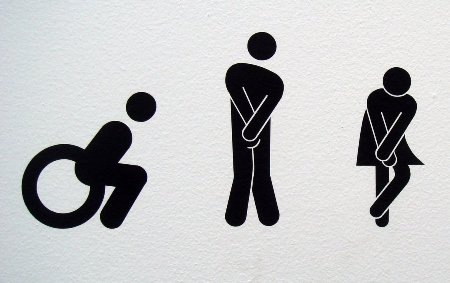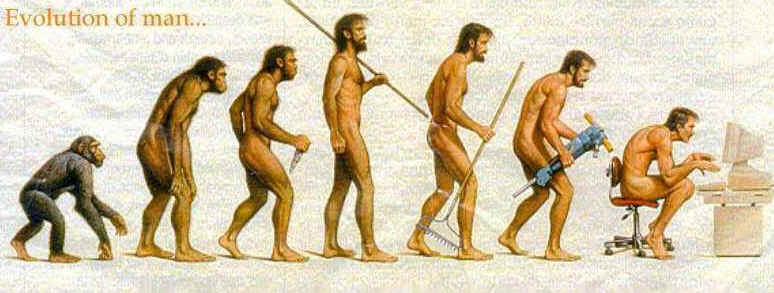Signs that Makes us Think and Feel
Sunday, November 30th, 2008One of the exercises that is most popular in my 3-day cognitive design workshop is redesigning signs to improve wayfinding, increase behavorial compliance (e.g. handwashing) instill pride, give the readers a little jolt of mental energy or otherwise leverage how minds actually work. It is a fairly straight forward application of cognitive design that gets an immediate response from your employees and customers. Besides it can be fun.
One of my favorite examples:
[Image source: The Semiotics of Toilet Signs]
A good way to tell patrons who the facility is for and more importantly to hurry it up when the toilet facilities are limited. Using images to generate empathy is often a better way of getting compliance than barking a command. Good cognitive design!
I just found a short (7 minute) YouTube video on Emotionally Intelligent Signs that provides some great examples of using Pecha Kucha to create signage that displays and encourages empathy. Check it out and then redesign a sign in your community or workplace.






 One approach, used by the United States Patent and Trademark Office (
One approach, used by the United States Patent and Trademark Office ( Another approach is to crowdsource it. If prior art exist someone out there already knows about it so the trick is to get them to share this knowledge with the patent examiner. There are a couple of groups trying to take this approach. The most recent is
Another approach is to crowdsource it. If prior art exist someone out there already knows about it so the trick is to get them to share this knowledge with the patent examiner. There are a couple of groups trying to take this approach. The most recent is  Philosophers doing empirical work to determine how people think and feel? Sounds like applied cognitive science in the field to me. No matter, as a cognitive designer I am interested in any field that attempts to better understand how people think and feel.
Philosophers doing empirical work to determine how people think and feel? Sounds like applied cognitive science in the field to me. No matter, as a cognitive designer I am interested in any field that attempts to better understand how people think and feel. IBM and five leading universities are pulling out all the stops to create nothing short of a “global brain” based on the latest neuroscience, super computing and nano tech.
IBM and five leading universities are pulling out all the stops to create nothing short of a “global brain” based on the latest neuroscience, super computing and nano tech.  And we have a limited supply of this type of mental energy. Depleting it can lead to poor cognitive performance. A recent issue of the
And we have a limited supply of this type of mental energy. Depleting it can lead to poor cognitive performance. A recent issue of the 
